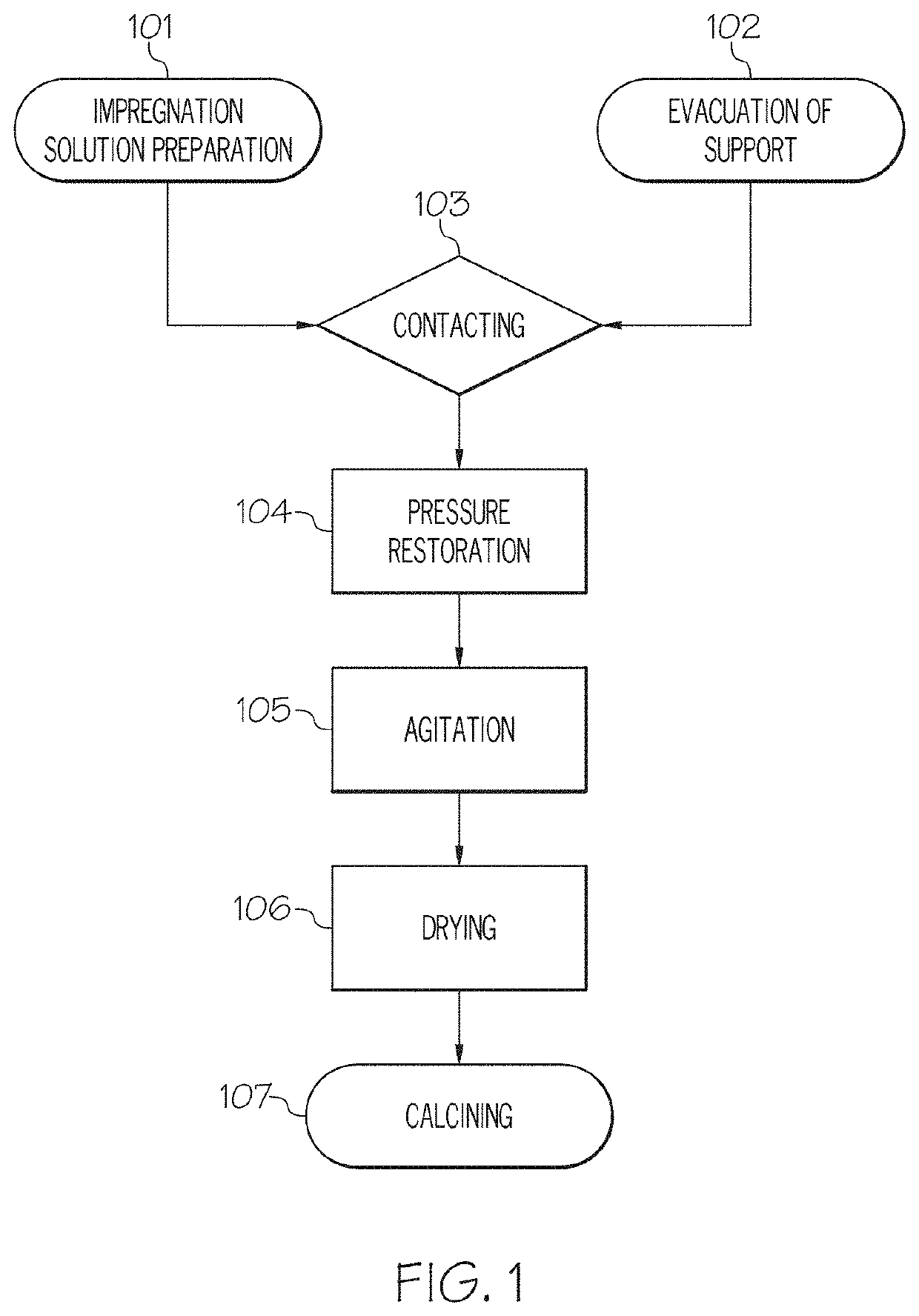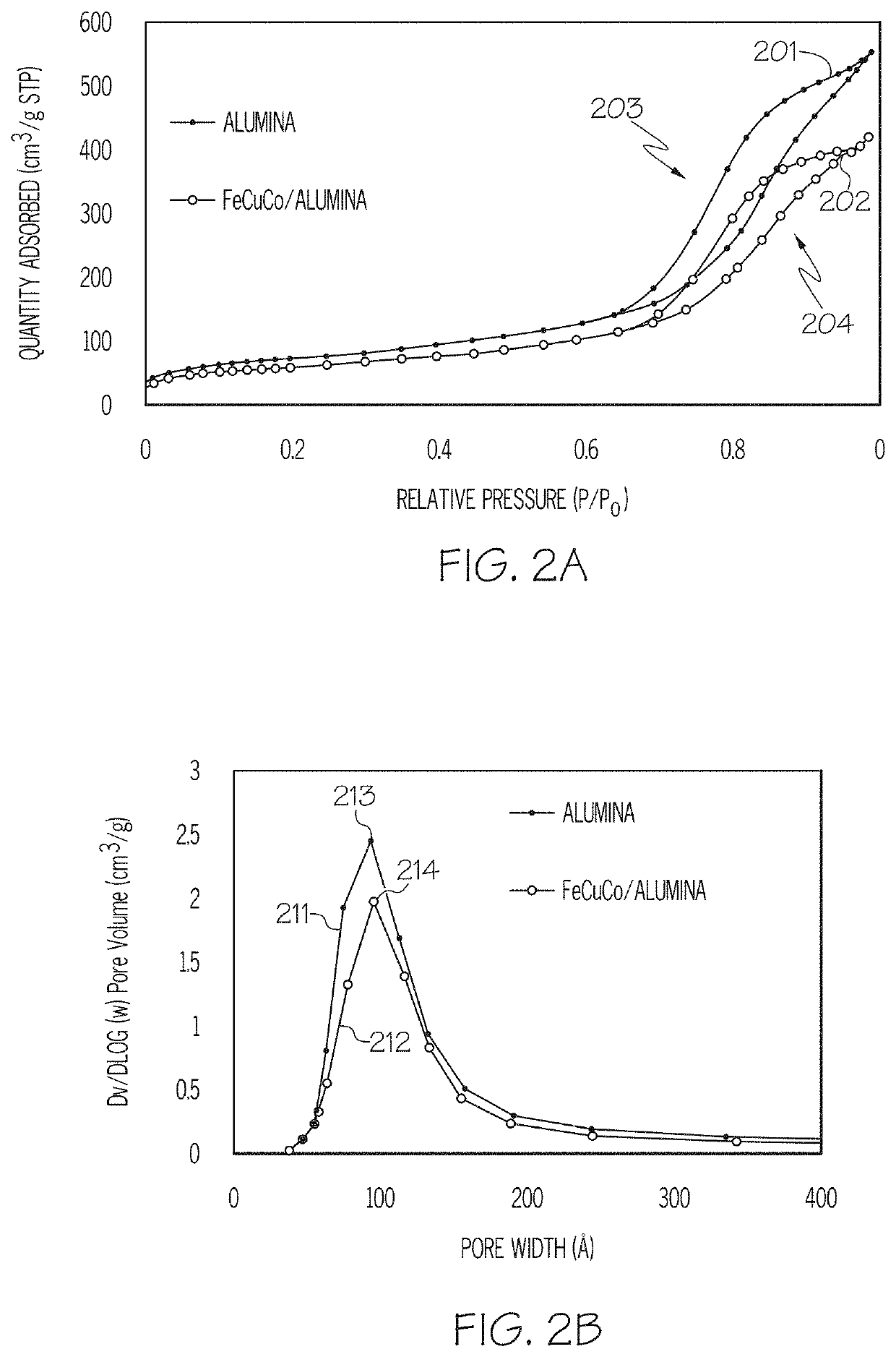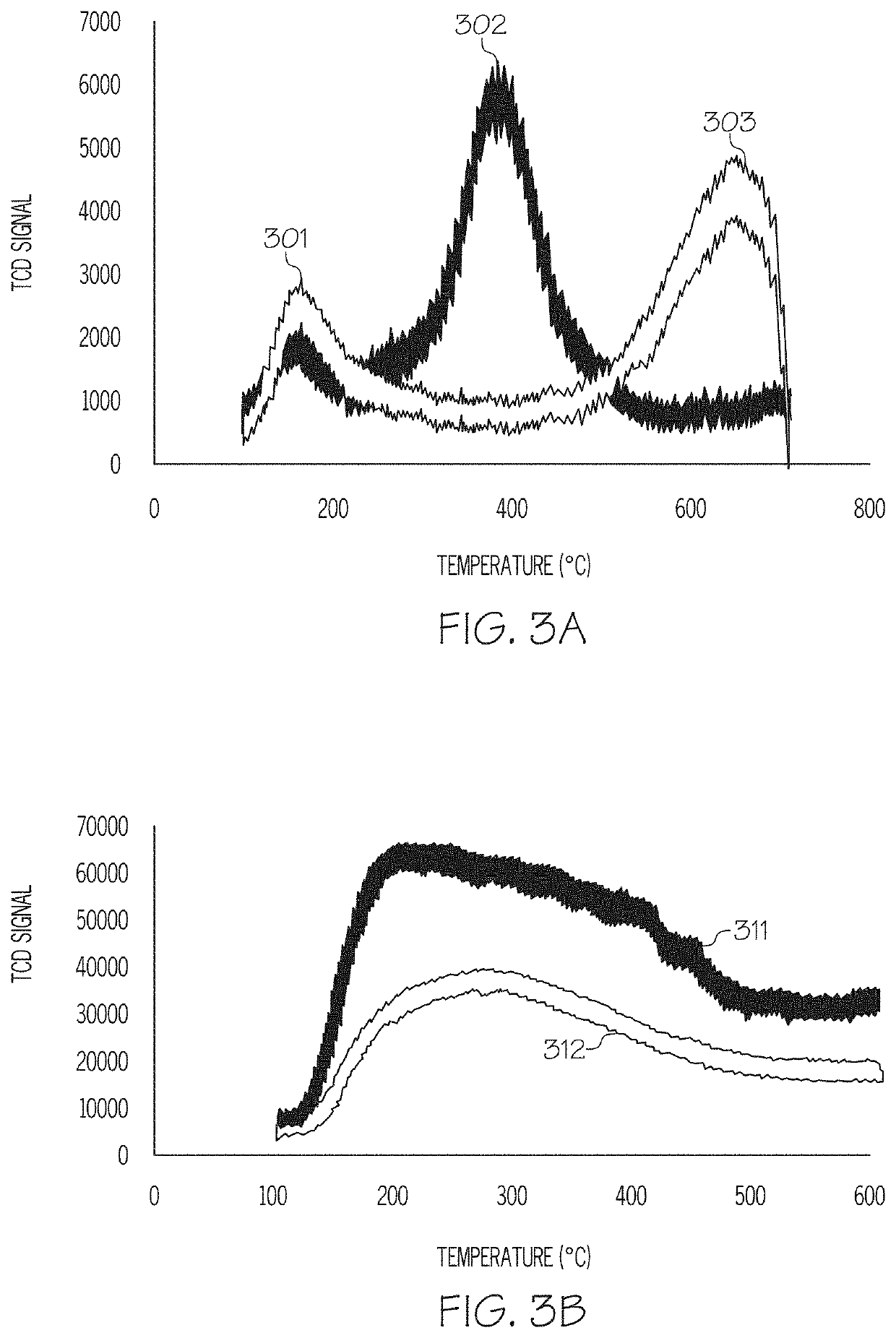Methods for forming ethylbenzene from polystyrene
a technology of ethylbenzene and polystyrene, which is applied in the field of catalysts, can solve the problems of not even achieving the same liquid yield and greater reaction temperature, and achieve the effect of good selectivity for ethylbenzene formation
- Summary
- Abstract
- Description
- Claims
- Application Information
AI Technical Summary
Benefits of technology
Problems solved by technology
Method used
Image
Examples
example 1
on of Fe—Cu—Co / alumina
[0089]To prepare a sample of the 1 weight percent (wt. %) multi-metallic catalyst, 5.0 grams (g) of gamma-alumina was evacuated overnight. Fe(NO3)3.9H2O, Cu(NO3)2.3H2O, and Co(NO3)2.6H2O were measured and mixed with deionized water to form an impregnation solution. The evacuated gamma-alumina was sonicated for 10 minutes, then the impregnation solution was added to the alumina in a quantity slightly greater than the alumina pore volume. The resulting mixture was then stirred at 60° C. for 3 hours, then dried in a vacuum oven overnight at 110° C. Finally, the dried FeCuCo / Al2O3 was calcined at 550° C. for 4 hours (hr) in air.
[0090]Table 1 gives a comparison of the raw alumina support used in Example 1 and the prepared FeCuCo / Alumina catalyst of Example 1. It can be seen that the BET surface area and the pore volume both decreased after impregnation of the support although the pore size did not change. This is believed to indicate that the pore structure remained...
example 2
n of Polystyrene to Ethylbenzene
[0095]To convert polystyrene to ethylbenzene, 2.0 g of polystyrene were combined with from 200 mg and 500 mg of the catalyst from Example 1, in a 25 mL reaction vessel. The resulting mixture was stirred and heated under air at a ramp rate of 4° C. / min to a final temperature of 250° C. and held at 250° C. for 90 minutes. The Comparative Example data of Table 2 is supplied from Kijenski, J. and T. Kaczorek, Catalytic degradation of polystyrene. Polimery, 2005, 50(1):p. 60-63.
[0096]
TABLE 2LiquidRxn TempCatalystYield %(° C.)AtmosphereComparativeNickel70375HydrogenExample Amolybdenum(H2)alumina(NiMo / Al2O3)ComparativeNiMo / Al2O370.9400NitrogenExample B(N2)ComparativeCobalt77.3375H2Example Cmolybdenumalumina(CoMo / Al2O3)ComparativeCoMo / Al2O372.6400N2Example DComparativeIron cobalt80.5375H2Example Esilica(FeCo / SiO2)ComparativeFeCo / SiO271.9400N2Example FExample 2FeCuCo / Al2O390250Air
[0097]Referring now to Table 2, it can be seen that only the present disclosure p...
PUM
| Property | Measurement | Unit |
|---|---|---|
| pore diameter | aaaaa | aaaaa |
| temperature | aaaaa | aaaaa |
| temperatures | aaaaa | aaaaa |
Abstract
Description
Claims
Application Information
 Login to View More
Login to View More - R&D
- Intellectual Property
- Life Sciences
- Materials
- Tech Scout
- Unparalleled Data Quality
- Higher Quality Content
- 60% Fewer Hallucinations
Browse by: Latest US Patents, China's latest patents, Technical Efficacy Thesaurus, Application Domain, Technology Topic, Popular Technical Reports.
© 2025 PatSnap. All rights reserved.Legal|Privacy policy|Modern Slavery Act Transparency Statement|Sitemap|About US| Contact US: help@patsnap.com



